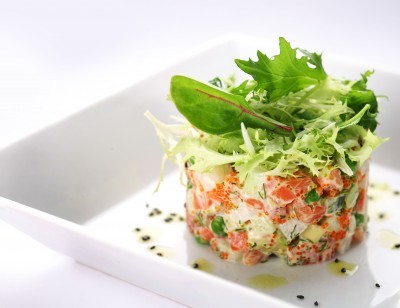Food Combining is a healthy way of eating that allows you to eat until you are satisfied, burns fat, gives you more energy, and creates balance within your system. The principles of food combining are based on how Insulin works in your body. When you eat carbohydrates, your body breaks them down into glucose which elevates your blood sugar. Insulin balances your blood sugar by carrying glucose to your cells. When your cells get filled with sugar, they won’t accept anymore and the sugar is stored as fat. Insulin surges may leave you feeling tired, or down, lowers your concentration, and also increases cravings. Repeated Insulin surges may lead to Insulin Resistance which causes weight gain, mood swings, and disease.
Some carbohydrates raise the blood sugar more than others. Refined, processed carbohydrates, such as white rice, potato chips, and white flour, are much harder for your body to break down. Complex carbohydrates, such as whole grains, brown rice, and vegetables cause minimal to moderate increases in your blood sugar. By cutting back on bad carbohydrates, you force your body to use fat reserves for energy which results in a healthier metabolism and balance.
The other source of energy our body uses are proteins and fats. Eaten alone, protein and fat do not raise Insulin levels. In order for your body to store fat, Insulin must be present. Our bodies need protein and good fats (unprocessed) for healthy cells, good skin, strong, lean muscles, concentration, and a stable mood. If you do not “combine” Protein/Fats with Carbohydrates, you will not store fat.
The purpose of Food Combining is to balance and regulate your body at its optimal level. The benefits are a lean body, increased energy, increased concentration, and elevated mood. Food Combining is not a diet. Diets are short-term and restrictive. Food Combining is a healthy way of eating that you can follow the rest of your life. Deciding to make a change in your Lifestyle takes effort, and some getting used to. Once you practice the concepts of Food Combining, break bad habits, and see the results, you will find the principles become second nature. A healthier you will emerge!
Food Combining Notes
*There are two Meal Choices:
- Protein/Fats and Veggies
- Carbs and Veggies
*Once your body becomes completely balanced, and you look and feel the way you like, you can start adding Carbohydrates in moderation to your Protein meals.
*Protein Shakes are meal replacements for either type of meal having both protein and good carbohydrates.
*Nuts are best eaten alone as they contain both protein and carbohydrates.
*Before beginning any change in eating habits, diet, or exercise always consult your physician.
© Nova Reed 2009
Food Combining Directions Summary
- Stay away from Sugar and Starches
- You have two Meal Type Choices:
Protein & Vegetables OR Carbohydrate & Vegetables - Eat Proteins and Fats with Vegetables
- Eat Complex Carbohydrates with Vegetables and NO fat
- Space your meals 3 hours apart when switching Meal Types
- Have Fruit in the morning:
If your breakfast is nonfat, include your fruit. If your breakfast is a protein, have your fruit and then wait one hour. *Egg whites and Protein Shakes are a free choice. - Do not skip meals or snacks. Enjoy your food and eat until you are satisfied.
Proteins and Fats:
Butter Cream Oil Mayonnaise Earth Balance
Sour Cream Cheese Eggs Fish Meat
Chicken Turkey Soy Nuts Almonds Protein Shake
Vegetables:
Asparagus Broccoli Green Beans Lettuce Mushrooms
Celery Cucumber Cauliflower Eggplant Spinach
Tomato Zucchini Peas Sprouts Watercress
Complex Carbohydrates:
Whole-grain Breads Durum Wheat Pastas Whole-grain Cereal
Nonfat Milk Products Beans Mustard Brown Rice
Fruits:
Berries Apples Oranges Papaya Peaches Pears Plums
Melons Nectarines Mangoes Grapes Kiwi
Sugars:
Sugar Syrup Molasses Beets Carrots Honey
Starches:
Bananas Potatoes Corn Popcorn Winter Squashes
White Flour White Rice Pasta made from White Flour




